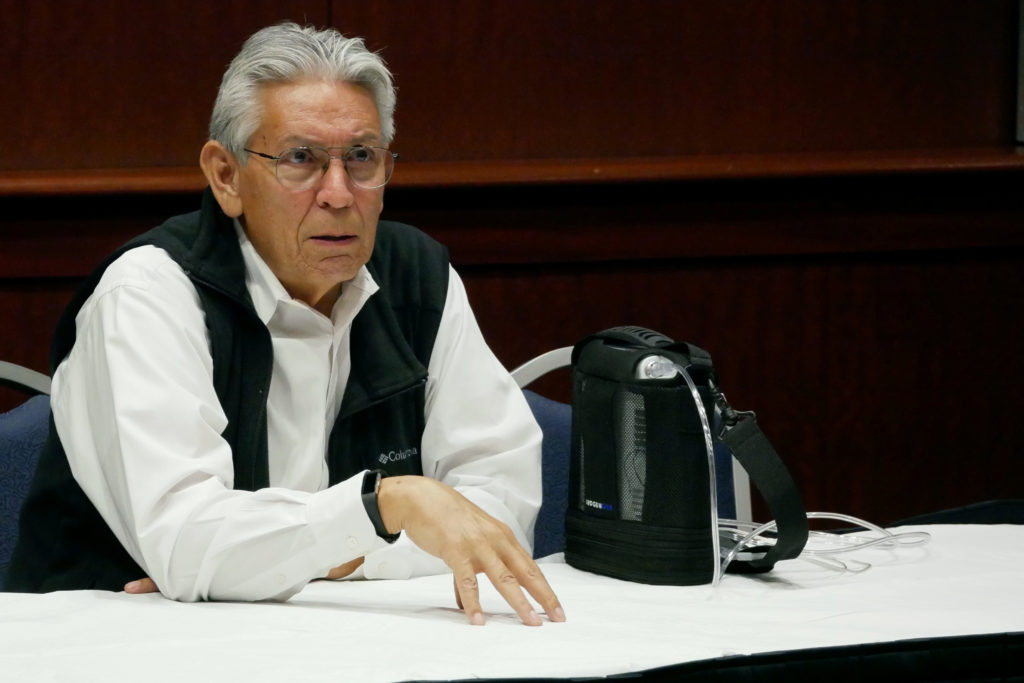The director of the Smithsonian National Museum of the American Indian discussed his career and problems with the way Native American history is taught at a lecture Thursday.
Kevin Gover, who became the museum’s director in 2007, discussed myths and realities about Native American history at the event, which was hosted by the Office of the Provost University Seminar Program and the AT&T Center for Indigenous Politics and Policy. Gover, a citizen of the Pawnee Tribe of Oklahoma and a former Assistant Secretary of Indian Affairs, also recounted his career as an attorney and a bureaucrat specializing in Native American issues.
In case you missed it, here are some highlights from the event:
1. Teaching Native American history
Gover said the American public is becoming increasingly “skeptical” of the “sanitized” version of American history that diminishes the scale of the injustices minorities faced. He pointed to the growing movement to rechristen Columbus Day as Indigenous Peoples’ Day as evidence that the “fairy tale is falling apart,” which he attributed to the work of activists.
“The zeitgeist has certainly changed,” he said. “I don’t think it was some miracle. I think it was a bunch of people working their butts off to make it happen. They’ve created this opportunity that we have right now to really change the narrative.”
Gover added that universities should incorporate America’s diversity into history course curricula by teaching the subject as more than a series of events involving “important white men.”
“There is no important story in American history that cannot be told through Native eyes,” he said.
2. Dispelling Native American myths
Gover discussed how misleading public school classes can leave some people misinformed even though they believe they are knowledgeable about indigenous history. He said a Smithsonian initiative called Native Knowledge 360° aims to expose falsehoods taught about Native American history and change people’s minds.
“People are only acting on what they were taught,” he said. “So given the opportunity, we may find that there are a lot of potential allies out there.”
Gover said he was taught and believed the same myths about Native Americans that many schoolchildren are taught today about Squanto, a member of the Patuxet Tribe who served as a liaison to the Pilgrims of Plymouth Colony in the early 1620s, and Pocahontas, a Native American woman said to have saved John Smith, an early colonist.
“I didn’t know the whole story,” he said. “I didn’t know that Squanto spoke English when the pilgrims arrived. Nobody told me that. That really changes the story – why? It makes it a little easier to understand and comprehend what was going on.”
3. Working at the Bureau of Indian Affairs
Gover, who worked as a lawyer on Native American issues for about 14 years, said he retired after realizing Indians “are not meant to win” in our legal system. He said that although he “lost his taste for combat,” there are “fortunately” many lawyers who are committed to fighting for indigenous rights.
“For every tribal victory, there’s somebody out there trying to figure out how to undo it,” he said. “They often succeed. It will never end and I suppose that’s the nature of things.”
Gover said his time as a lawyer and assistant secretary at the Bureau of Indian Affairs, a federal agency within the Department of the Interior, was difficult because each election meant new leadership in the bureau. He said he often encountered policymakers who “knew nothing” about Native Americans – and who he would have to educate about tribal issues.
“People who were making decisions that had an enormous impact on what’s going on in Indian country, the lives of Native American people, knew nothing, nothing at all that was true about Indians,” Gover said.





